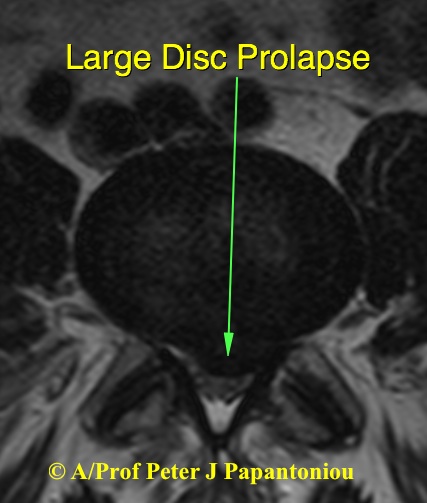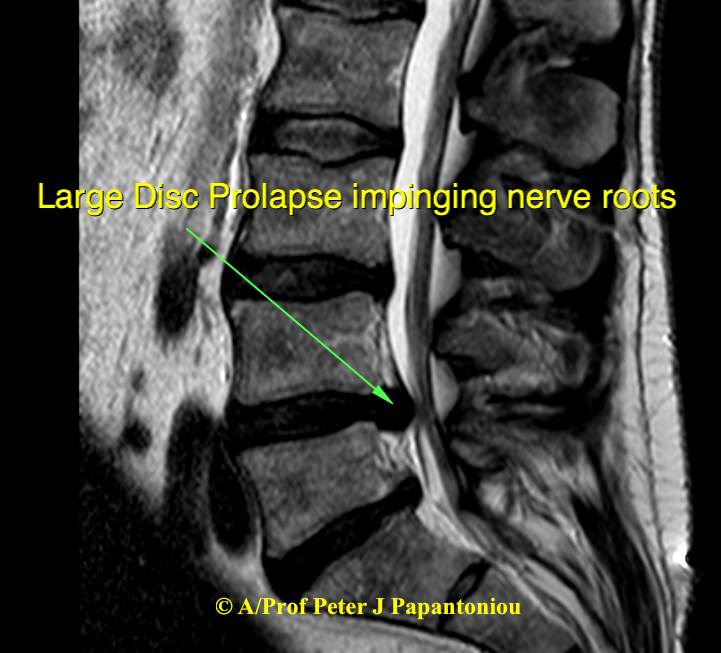

Disc Prolapse
A disc prolapse, also known as a herniated disc or slipped disc, occurs when the soft, spongy material (nucleus pulposus) inside a spinal disc bulges out through a crack in the tougher exterior (annulus fibrosis). This can put pressure on nearby nerves, causing pain and other symptoms such as tingling or numbness in the limbs.
The treatment for a disc prolapse typically depends on the severity of symptoms. Options may include:
- Conservative treatment: such as physical therapy, pain medication, hot/cold therapy, and exercise.
- Interventional procedures: such as epidural steroid injections and nerve blocks.
- Surgery: such as a discectomy or spinal fusion, for severe cases that do not respond to other treatments.
It is important to consult A/Prof Papantoniou to determine the best course of treatment for your specific case.
Lumbar Discectomy: What You Need to Know
A lumbar discectomy is a surgical procedure to remove part of a damaged or herniated disc in the lower spine. It is typically done to relieve pressure on a spinal nerve, reducing pain, numbness, and weakness, often caused by sciatica.
When Is It Needed?
- Severe leg pain persists despite non-surgical treatments (physiotherapy, pain relief, epidural steroid injections).
- Weakness or numbness worsens.
- Bladder or bowel control is affected (a medical emergency) – you must present to the nearest public hospital immediately.
How Is It Done?
The procedure is performed under general anesthesia. A small incision is made in the lower back, and part of the disc pressing on the nerve is removed. Minimally invasive or endoscopic techniques may be used for faster recovery.
Recovery and Outlook
- Most patients go home the next day.
- Light activities can resume in a few weeks; full recovery takes around 6 weeks.
- Physiotherapy helps strengthen the back and prevent future issues.
A lumbar discectomy has a high success rate, with most patients experiencing significant pain relief. However, proper posture, exercise, and lifestyle changes are essential to prevent further disc problems.